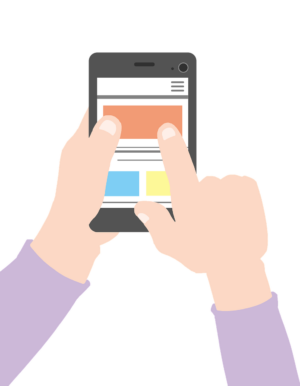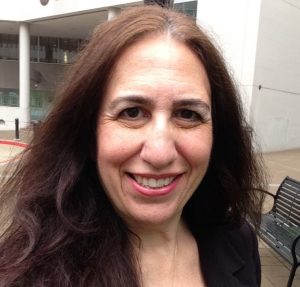Has Technology Really Killed The Personal Touch In Law Practice -- And Is That Really A Bad Thing?
The grass wasn't always greener.
 In her recent post, In Defense of Personal Relationships in the Practice of Law, my fellow columnist, Jill Switzer writes how technology has killed the “art of interaction” between lawyers. Switzer observes that lawyers rarely have opportunities to meet in person since hearing conferences that were once handled face to face before a judge now take place by phone; the meet and confer requirements of various civil procedure rules are satisfied through an exchange of emails and nasty-grams, CLE courses are viewed alone via webinar rather than in a room filled with colleagues and depositions are conducted remotely by phone or Skype. Yet while Switzer mourns the changes wrought by technology because they’ve displaced the “personal relationships that meant almost everything to us dinosaurs,” I celebrate technology changes precisely because they’ve enabled me to create meaningful personal relationships, and indeed, to build a career that might have otherwise been foreclosed to me as a woman and a parent.
In her recent post, In Defense of Personal Relationships in the Practice of Law, my fellow columnist, Jill Switzer writes how technology has killed the “art of interaction” between lawyers. Switzer observes that lawyers rarely have opportunities to meet in person since hearing conferences that were once handled face to face before a judge now take place by phone; the meet and confer requirements of various civil procedure rules are satisfied through an exchange of emails and nasty-grams, CLE courses are viewed alone via webinar rather than in a room filled with colleagues and depositions are conducted remotely by phone or Skype. Yet while Switzer mourns the changes wrought by technology because they’ve displaced the “personal relationships that meant almost everything to us dinosaurs,” I celebrate technology changes precisely because they’ve enabled me to create meaningful personal relationships, and indeed, to build a career that might have otherwise been foreclosed to me as a woman and a parent.
As I’ve written many times, when I started my law firm back in 1993, the most advanced technology available to me was word-processing and email — which wasn’t much use since few others were using email for business at that time. Researching legislative history back then entailed a trip to the bowels of the House Office Building, Annex 2 — which could consume several hours. Filing a brief required at least a full day of lead time to allow sufficient time for production of an original and fourteen bound, 50-page copies — and that too, necessitated a drop off at the copy store. As for networking, two of the bar committees that I was involved with at the time (back when I still could tolerate bar activities) each met monthly during lunch, (which is also when brown bag CLE programs were held) — all of which took over two hours out of my day when taking into account travel from my office to the event then back.
As for personal connections… I didn’t make any. As a young lawyer starting out in my practice, most colleagues wouldn’t even return my phone calls. I managed a couple of meetings by trekking over to colleagues’ offices under the guise of “young lawyer seeking advice,” but honestly, I can’t recall a single occasion when another lawyer reciprocated or invited me out. The so-called “personal connections” among lawyers only work when one a lawyer stands to gain something — be it a referral or new connection — and as a young lawyer, I had nothing to give so I was persona non-grata in networking circles. I wonder, how many times Ms. Switzer or her colleagues have actually introduced themselves to a newbie lawyer at a networking function, asked about their practice and then called to invite them out to lunch. My guess is somewhere between one and zero.

Law Firm Business Development Is More Than Relationship Building
In any event, I could have tolerated the networking and committee lunches and long trips to courthouses and Congress and worked longer hours to make up lost time. But once I had kids, all of that changed. Because I wanted to spend time with my daughters, I moved my practice back to my home — but I was able to continue working because most of my clients were remote. Back then, I worked in the short stretches of time when my daughters napped or were in pre-school or with a part-time nanny, then after they were in school and at night between 9 p.m. and 1 a.m. when my husband was able to take over. Back then, every minute counted — and suddenly a lunchtime meeting with the bar committee wasn’t just a lost lunch time, but a lost work session — since it would consume the entire period that my girls were in pre-school. A two-hour deposition two hours away amounted to a six hour day where my husband might have to step in to do pickup. I barely had enough time to get my existing client work done then to go out evenings and network. I very nearly lost my practice .
But then, shortly after my younger daughter was born in 1999, technology happened. Of course, it had been around for years before, but it wasn’t until the late ’90s that it really began to penetrate the legal profession. Now, instead of spending an afternoon to carry a brief over to the D.C. Circuit, I could zap it out a few seconds before midnight. Legislative history and other legal research were available at my fingertips so my research wasn’t confined to the hours when the law libraries were open. And with scheduling conferences now taking place by phone, I could expand my practice to federal courts several hours away without having to worry that I’d have to drive 4 hours for a 10-minute conference.
Meanwhile, rather than take away personal interaction, technology facilitated connections with other lawyers all over the country. In 2000, I joined the ABA’s Solosez list serve which gave me 800 welcoming people from all over the country to talk to about my practice — and personal matters as well. In fact, it was through Solosez that I met one of my best friends, a woman a few years younger than me who was also balancing a home-based practice with raising kids. A few years after that, came blogging — which is how I found clients and bolstered my reputation in my industry — and also met and befriended three other ATL columnists, Bob Ambrogi, Kevin O’Keefe and Nicole Black. Finally, social media like Facebook and Twitter and Instagram emerged, which provided an opportunity to learn more about my lawyer-colleagues’ personal lives — their hobbies, their recipes, vacations, their triumphs and sorrows. I’ve since met many of my online friends as well — either when they or I am traveling to another city or at conferences. Those relationships also go far beyond the professional. After my husband died two years ago, only a small handful of my colleagues here in D.C. — lawyers whom I’ve met and worked with on multiple occasions — reached out to me. By contrast, dozens of lawyers whom I knew only through social media sent cards, condolences and donations to my husband’s designated charities.
Technology has enabled hundreds of female lawyers — who 20 years ago might have left the law to stay home with children — to instead remain in the legal profession or reinvent themselves within it. And it’s given lawyers access to a far more varied and diverse group of colleagues than any of us could find even in a metropolitan area such as Washington D.C. where I am based. For me, it’s not even a close call that technology has improved the legal profession in large part because it has provided more opportunity for personal interaction, not less.
Sponsored

Curbing Client And Talent Loss With Productivity Tech

How The New Lexis+ AI App Empowers Lawyers On The Go

AI Presents Both Opportunities And Risks For Lawyers. Are You Prepared?

AI Presents Both Opportunities And Risks For Lawyers. Are You Prepared?
Meanwhile, those close, collegial relationships of yore that Switzer longs for, if they did exist as she recalls — were only open to a small select circle of insiders — but not to young lawyers with few clients or contacts or to mom-lawyers working the 9 p.m. to 1 a.m. shift. Let’s never return to that world again.
 Carolyn Elefant has been blogging about solo and small firm practice at MyShingle.comsince 2002 and operated her firm, the Law Offices of Carolyn Elefant PLLC, even longer than that. She’s also authored a bunch of books on topics like starting a law practice, social media, and 21st century lawyer representation agreements (affiliate links). If you’re really that interested in learning more about Carolyn, just Google her. The Internet never lies, right? You can contact Carolyn by email at [email protected]or follow her on Twitter at @carolynelefant.
Carolyn Elefant has been blogging about solo and small firm practice at MyShingle.comsince 2002 and operated her firm, the Law Offices of Carolyn Elefant PLLC, even longer than that. She’s also authored a bunch of books on topics like starting a law practice, social media, and 21st century lawyer representation agreements (affiliate links). If you’re really that interested in learning more about Carolyn, just Google her. The Internet never lies, right? You can contact Carolyn by email at [email protected]or follow her on Twitter at @carolynelefant.
Sponsored

Happy Lawyers, Better Results The Key To Thriving In Tough Times








